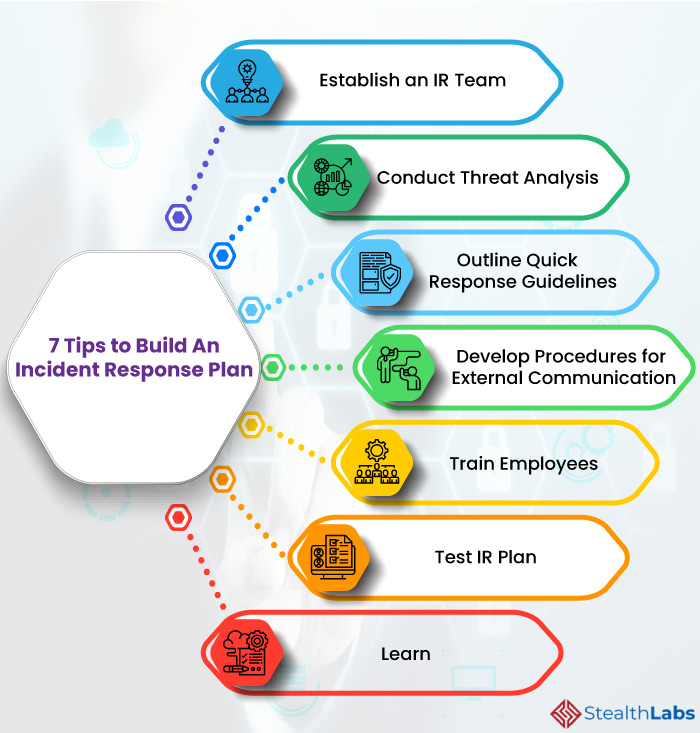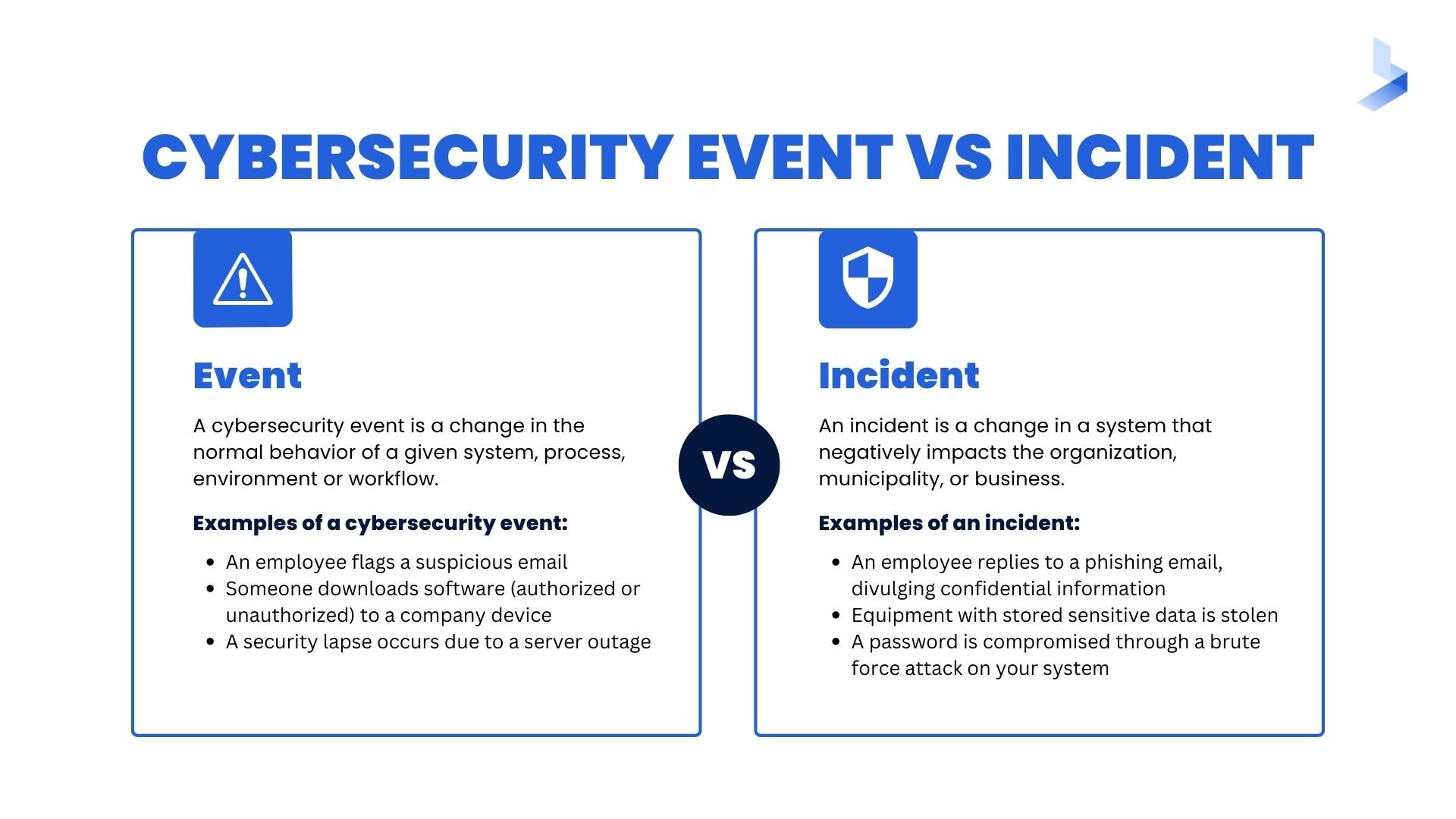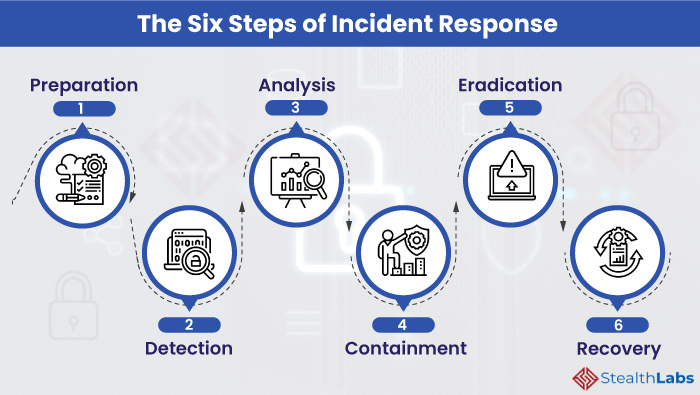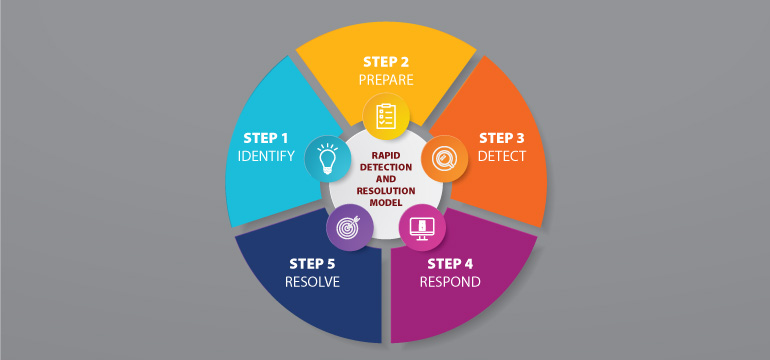
Introduction
Incident response refers to the process of effectively and efficiently addressing and managing cybersecurity incidents within an organization. These incidents may include data breaches, malware infections, hacking attempts, or any unauthorized access that can potentially compromise the confidentiality, integrity, or availability of sensitive information or systems.
Why is incident response important for cybersecurity strategy?
- Rapid Detection and Containment: Incident response helps in swiftly detecting security incidents, mitigating their impact, and containing them. This can significantly reduce the potential damage caused by cyber threats, preventing them from escalating into larger-scale attacks.
- Minimize Downtime: A well-executed incident response plan helps to minimize the downtime caused by cybersecurity incidents. Effective containment and recovery processes ensure that essential business operations are restored as quickly as possible, minimizing disruption to normal operations.
- Preserve Reputation and Customer Trust: A robust incident response capability demonstrates a commitment to protecting sensitive information and customer data. By responding promptly and transparently to security incidents, organizations can maintain their reputation and the trust of their customers, partners, and stakeholders.
- Learning and Improvement: Incident response enables organizations to learn from past incidents and continually improve their cybersecurity posture. The process helps find security weaknesses, so better prevention can be done in the future.
In conclusion, incident response plays a crucial role in any comprehensive cybersecurity strategy. It helps organizations detect, respond to, and recover from security incidents effectively, mitigating their impact and protecting valuable assets. Investing in incident response capabilities is essential in today’s threat landscape to ensure the resilience and security of business operations.

Incident Response Process
Preparation phase
The first stage of the incident response process is the preparation phase. During this phase, organizations establish an incident response plan, designate a dedicated team, and determine the necessary resources and technologies. To develop an incident response plan, you need to identify security threats, define response procedures, and establish communication channels to keep everyone informed and involved.
Detection and analysis phase
Once the preparation phase is complete, the detection and analysis phase begins. This phase involves monitoring networks and systems to identify any suspicious activity or potential security breaches. By analyzing logs, conducting system scans, and leveraging threat intelligence, organizations can detect and verify security incidents. Quick detection is crucial to minimize the impact and scope of an incident.
During this phase, organizations also conduct a thorough analysis, investigating the root cause, impact, and potential vulnerabilities exposed during the incident. This analysis informs the appropriate response and provides valuable insights for improving future security measures.
By effectively following the incident response process, organizations can detect and respond to security incidents promptly, reducing the impact on their operations and protecting sensitive data. It also guarantees that necessary steps are taken to avoid similar incidents in the future, ultimately improving overall cybersecurity.
Incident Response: Why Important for Cybersecurity Strategy
Incident response is a critical component of any effective cybersecurity strategy. Businesses today face a growing number of cyber threats. They must take steps to quickly detect, respond to, and reduce the impact of incidents.
Roles and responsibilities
An incident response team (IRT) plays a vital role in safeguarding a company’s digital assets. The team consists of individuals with diverse expertise, ranging from cybersecurity analysts to legal professionals. Their responsibilities typically include:
- Detection and investigation: The IRT closely monitors the network for any signs of suspicious activities and investigates potential threats or breaches. They analyze incident data and determine the severity and impact to develop an appropriate response plan.
- Response and remediation: Once an incident is confirmed, the IRT takes immediate action to contain and mitigate the impact. They work to restore affected systems, identify vulnerabilities, and implement measures to prevent similar incidents in the future.
Communication and collaboration
Effective communication and collaboration are crucial during incident response. The IRT needs to create clear ways to share information quickly with team members, stakeholders, and outside entities like regulators or law enforcement. Collaboration with IT teams, management, and external experts is essential to address incidents efficiently and make informed decisions.
By implementing a well-defined incident response plan, organizations can minimize the disruption caused by cyber incidents and reduce the financial and reputational damage associated with data breaches or system compromises.
In summary, incident response is a critical component of a comprehensive cybersecurity strategy. It enables organizations to detect and respond to cyber incidents promptly, limit the impact, and protect sensitive data. To improve cybersecurity and reduce risks from cyber threats, businesses should create a skilled incident response team and promote communication and collaboration.

Incident Response: Why Important for Cybersecurity Strategy
Incident Response is a critical component of any effective cybersecurity strategy. It refers to the process of identifying, responding to, and managing cybersecurity incidents to minimize potential damage and return the affected systems to normal operation as quickly as possible. Here are some key points to understand why incident response is important in cybersecurity.
1. Detect and Respond to Threats
With the increasing frequency and sophistication of cyber threats, organizations need to have a proactive approach to detect and respond to incidents. Incident response helps identify potential threats early on and enables a quick response to minimize their impact. This can save organizations from significant financial losses, reputational damage, and operational disruptions.
2. Reduce Mean Time to Resolution (MTTR)
One of the primary goals of incident response is to reduce the Mean Time to Resolution (MTTR). By having a well-defined incident response plan and the right tools and technologies in place, organizations can streamline the process of incident detection, analysis, containment, eradication, and recovery. This helps minimize the downtime and disruption caused by security incidents, allowing businesses to resume normal operations swiftly.
3. Learn from Incidents
Incident response also plays a crucial role in post-incident analysis and learning. By analyzing the root causes, attack vectors, and tactics used in security incidents, organizations gain valuable insights that can be used to enhance their overall cybersecurity posture. This knowledge helps in implementing appropriate security controls, training employees, and improving incident response plans to prevent future incidents effectively.
Incident Response Tools and Technologies
Security Information and Event Management (SIEM)
SIEM solutions help organizations aggregate and analyze security event logs from various sources. They provide real-time visibility into potential threats, detect anomalous activities, and generate alerts for immediate action. SIEM tools enable incident responders to correlate events, identify attack patterns, and investigate security incidents effectively.
Forensic and Analysis Tools
Forensic and analysis tools are essential for incident response teams to gather and analyze digital evidence during investigations. These tools help analyze memory, disk image, network, and malware to find the source, extent, and impact of security incidents. They facilitate the collection of forensic evidence following best practices to support legal and regulatory requirements.
In conclusion, incident response is a crucial aspect of a robust cybersecurity strategy. It enables organizations to detect, respond to, and manage cyber threats effectively, reducing the impact of incidents and improving overall cybersecurity resilience. Having the right tools and technologies, such as SIEM and forensic analysis tools, further enhances the capabilities of incident response teams.

Benefits of a Strong Incident Response Strategy
Rapid detection and containment of incidents
Incident Response is an essential component of any robust cybersecurity strategy. It involves the processes, tools, and methodologies used to identify, respond to, and mitigate a cybersecurity incident. Here are the key benefits of having a strong incident response strategy in place:
- Swift Detection: A well-prepared incident response plan enables organizations to quickly detect and identify potential threats or breaches. Businesses can prevent significant damage by implementing proactive monitoring and detection systems, which enable them to identify incidents in real-time and contain them promptly.
- Timely Containment: With an incident response strategy, organizations can swiftly contain and isolate incidents, preventing them from spreading and causing further harm. This ensures that the impact is minimized and limited to a smaller area, reducing the scope of the incident and providing more time to respond effectively.
Minimizing damage and reducing recovery time
- Damage Minimization: A well-executed incident response plan helps minimize the damage caused by an incident. Timely incident containment and the implementation of appropriate response strategies can prevent the compromise of critical systems, sensitive data breaches, and reputational damage.
- Reduced Recovery Time: Effective incident response processes help organizations recover from cybersecurity incidents faster. By having predefined steps and procedures in place, businesses can streamline the recovery process, minimizing downtime and ensuring minimal disruption to operations.
In conclusion, investing in a strong incident response strategy is crucial for organizations in today’s digital landscape. It not only enables rapid detection and containment of incidents but also minimizes damage and reduces recovery time. By being proactive and prepared, businesses can safeguard their systems, data, and reputation against cyber threats and ensure business continuity.
Best Practices for Effective Incident Response
Developing an incident response plan
In today’s digital landscape, organizations need to have a robust incident response plan in place to effectively handle cybersecurity incidents. This plan outlines the steps and processes to be followed when a security breach occurs. Provide clear guidelines for contacting the appropriate individuals, containing the incident, and communicating with both internal and external parties. By developing a well-structured incident response plan, businesses can minimize the impact of an incident, reduce downtime, and protect sensitive data from falling into the wrong hands.
Regular testing and updating
Once an incident response plan is in place, it is crucial to regularly test and update it. Regular testing helps identify any gaps or weaknesses in the plan and allows organizations to fine-tune their response procedures. This could involve running simulated cyber attack scenarios or conducting tabletop exercises with key stakeholders. The plan should always be updated to include new types of cyber threats and lessons learned from past incidents. By regularly testing and updating the incident response plan, organizations can ensure its effectiveness and adaptability in the face of evolving cyber threats.
Effective incident response is a critical component of a comprehensive cybersecurity strategy. By developing a well-structured incident response plan and regularly testing and updating it, organizations can minimize the impact of security breaches and protect their valuable assets from cyber threats.

Incident Response: Why Important for Cybersecurity Strategy
Incident response is a critical component of any comprehensive cybersecurity strategy. It involves preparing for and responding to potential security incidents in an effective and timely manner. By having a well-defined incident response plan in place, organizations can minimize the impact of security breaches and protect their sensitive data from falling into the wrong hands.
Incident Response in Compliance with Regulations
Meeting regulatory requirements is one of the main reasons why incident response is important in cybersecurity strategy. Regulations such as the General Data Protection Regulation (GDPR) and the Health Insurance Portability and Accountability Act (HIPAA) impose strict obligations on organizations to safeguard personal and sensitive information.
GDPR and incident response
The GDPR, which applies to organizations handling personal data of EU citizens, requires organizations to have appropriate security measures in place to protect personal data. In the event of a data breach, organizations must notify the supervisory authority within 72 hours of becoming aware of the breach. Having an incident response plan can help organizations meet these requirements by enabling them to quickly identify, contain, and report security incidents.
HIPAA and incident response
Under HIPAA, healthcare organizations are required to implement safeguards to protect the privacy and security of patients’ protected health information. In the event of a breach, organizations must notify affected individuals, the Department of Health and Human Services, and in some cases, the media. An effective incident response plan allows healthcare organizations to detect and respond to security incidents promptly, minimizing the impact on patient privacy and ensuring compliance with HIPAA regulations.
In conclusion, incident response is an essential part of a cybersecurity strategy as it helps organizations mitigate the impact of security incidents, comply with regulations, and protect sensitive data. By investing in incident response preparedness, organizations can enhance their overall cybersecurity posture and minimize the risks associated with cyber threats.

Incident Response: Why Important for Cybersecurity Strategy
Effective incident response is a critical component of a comprehensive cybersecurity strategy. In today’s rapidly evolving threat landscape, organizations must be prepared to respond quickly and effectively to cyber incidents to minimize damage and protect sensitive data.
Skill and resource shortages
A major challenge in incident response is the shortage of skilled professionals and resources. Organizations often struggle to find and retain qualified cybersecurity experts who can effectively analyze and respond to security incidents. This shortage can hinder the ability to detect and contain breaches promptly, leading to prolonged exposure and increased damage. To address this challenge, organizations should invest in ongoing training and development programs for their cybersecurity teams, as well as consider outsourcing specific incident response tasks to specialized third-party providers.
Coordination and prioritization
Another critical challenge in incident response is coordinating and prioritizing actions during a cyber incident. When faced with a security breach, organizations must quickly assess the severity of the incident, gather relevant information, and prioritize response efforts. This requires effective communication and collaboration across multiple teams, including IT, legal, PR, and executive leadership. Establishing predefined incident response processes, protocols, and communication channels can help streamline coordination and ensure a timely and effective response.
Implementing an incident response plan is crucial to address potential cyber threats proactively. It enables organizations to detect and respond to security incidents promptly, minimize damage, and restore normal operations quickly. Regular testing and updating of the incident response plan is important to keep it effective against evolving threats. By prioritizing incident response as part of their cybersecurity strategy, organizations can enhance their resilience and protect their valuable assets from cyber threats.

Conclusion
In conclusion, incident response is a critical component of any cybersecurity strategy. It helps organizations effectively manage and mitigate the impact of cyber threats, ensuring the confidentiality, integrity, and availability of their systems and data. By having a well-defined incident response plan in place, businesses can respond promptly and efficiently to incidents, minimizing damage and downtime. Moreover, incident response also plays a crucial role in complying with industry regulations and maintaining customer trust.
Importance of incident response in cybersecurity strategy
- Rapid detection and response: Incident response allows organizations to detect and respond to cyber threats in a timely manner. It helps identify the root cause of incidents, contain the damage, and prevent further infiltration.
- Minimize impact: The ability to quickly respond to and mitigate incidents reduces the potential impact on operations, data, and reputation. This ensures business continuity and reduces financial losses.
- Compliance: Many industry regulations and standards, such as the General Data Protection Regulation (GDPR) and the Payment Card Industry Data Security Standard (PCI DSS), require organizations to have an incident response plan in place. Compliance with these regulations is essential to avoid penalties and maintain trust with clients and stakeholders.
- Continuous improvement: Incident response provides organizations with valuable insights into their security posture and vulnerabilities. By analyzing incidents and their root causes, businesses can enhance their cybersecurity defenses and reduce the likelihood of future incidents.
Key takeaways
Implementing a robust incident response plan is crucial for organizations to effectively handle cyber incidents and minimize their impact. Key takeaways include:
- Incident response enables rapid detection, containment, and response to cyber threats.
- It helps minimize the impact of incidents on operations, data, and reputation.
- Compliance with industry regulations necessitates the development of an incident response plan.
- Incident response provides valuable insights for improving cybersecurity defenses and reducing the likelihood of future incidents.




